Have you added a variegated plant to your houseplant collection? Here are the best tips for how to care for plants with variegated leaves!
I love collecting house plants, and one thing that I look for now that I have an established indoor plant collection is plants with something really unique about their appearance.
This could be a cool leaf shape, a beautiful flower, or unique variegation.
Today I want to talk about veriegated plants, because they are so popular and do have some specific care needs.
Because variegation is unique and eye-catching, plant stores usually charge an up-charge additional cost for these veriegated plants when compared to their non-veriegated counterparts.
So, you definitely want to make sure that you are keeping your premium plant both alive, thriving, and maintain its leave variegation.
Let’s talk about how to care for plants with variegated leaves!
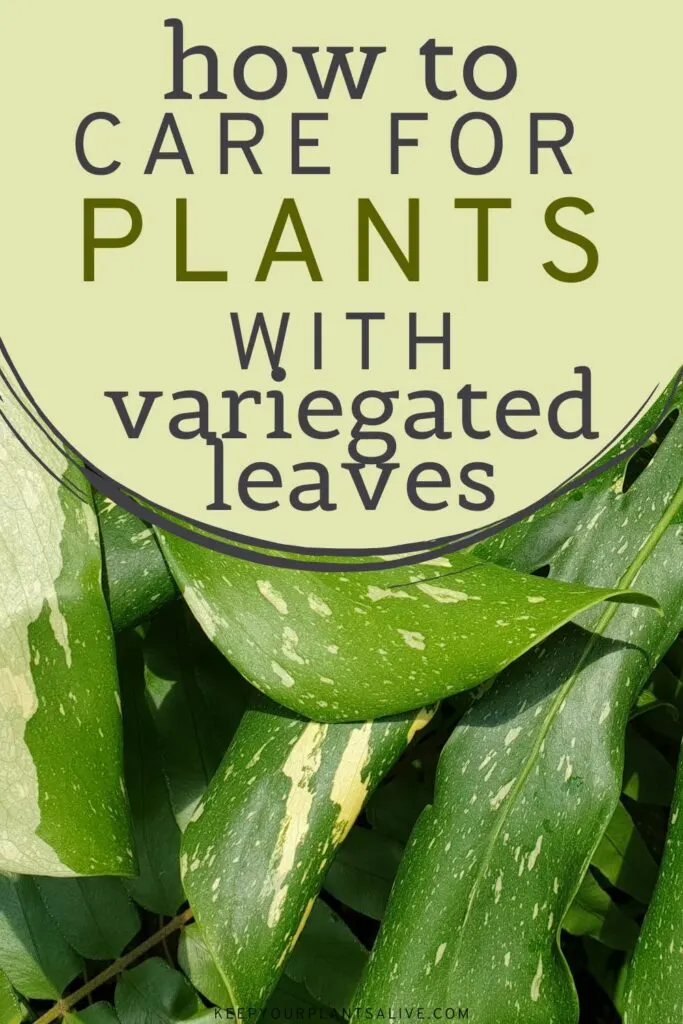
Understanding Variegated Leaves
Before we dive into caring for variegated houseplant leaves, lets talk about what they are!
What are variegated leaves?
Variegated leaves simply mean plant leaves that have more than one color.
This is usually in the form of colored veining on the leaves, but can also be a colored border, filling, or even spots or splotches on the leaves.
Why do some plants have variegated leaves?
Variegated leaves are naturally occurring and can have a few different causes.
Natural Variegation
Why it Occurs: Natural variegation in plants is primarily the result of genetic mutations. These mutations can affect the chlorophyll production or distribution within plant cells, leading to variations in leaf coloration.
Genetic Factors: Various genetic factors, including recessive genes and transposons (jumping genes), can cause natural variegation. In some cases, these genetic mutations can create unique leaf patterns, with areas of green and non-green (often white or yellow) tissues within the same plant.
Examples: Common examples of plants with naturally variegated leaves include the pothos (Epipremnum aureum), snake plant (Sansevieria trifasciata), and hostas (Hosta spp.).
Viral Variegation
Why it Occurs: Viral variegation is a result of plant infections by certain viruses, which interfere with the plant’s normal chlorophyll production and distribution. These viruses can disrupt pigmentation in plant cells, leading to irregular leaf coloration.
Mosaic Viruses: Viruses like the Tobacco mosaic virus (TMV) and the Cucumber mosaic virus (CMV) are known to cause mosaic patterns in plant leaves. These viruses infect plants and disrupt chloroplast function, resulting in areas of altered pigmentation.
Symptoms: Infected plants often exhibit mosaic patterns, which can include yellow, white, or light green streaks or patches amidst the otherwise green leaves.
Chimeral Variegation
Why it Occurs: Chimeral variegation arises from the presence of different types of tissues within the same plant. It occurs due to a combination of genetic factors and mutations during plant development.
Layered Tissues: Chimeral variegation typically involves three types of tissues in a layered pattern: the outer epidermis, the middle mesophyll, and the innermost vascular tissue. Each layer may have different pigmentation properties.
How it Develops: During the growth of a plant, as a genetic mutation.
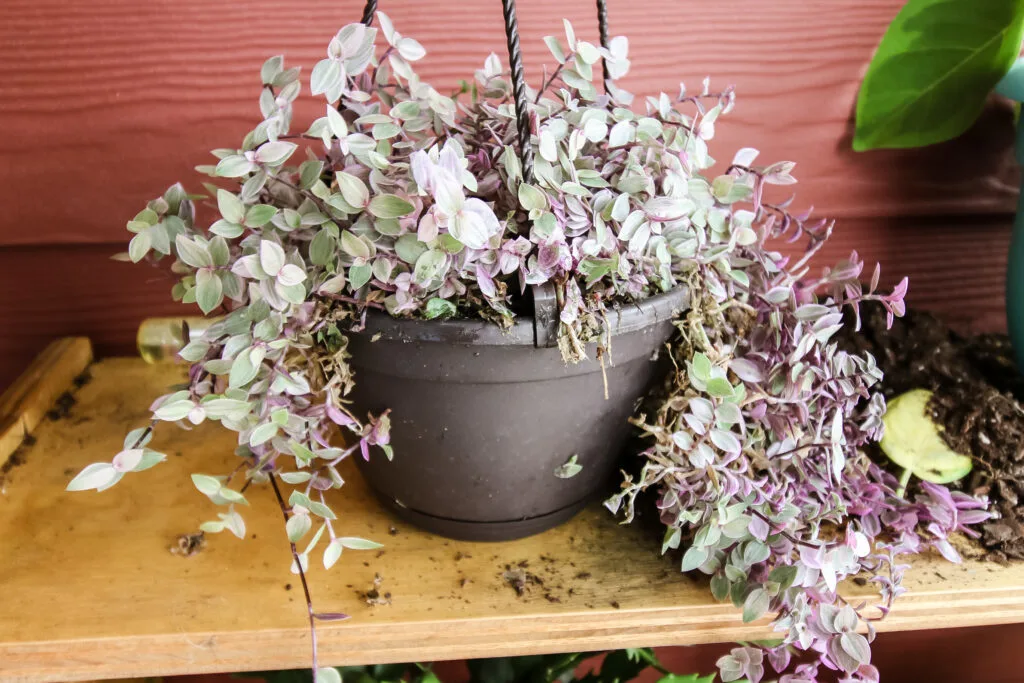
Common variegation patterns
Variegated plant leaves usually have white, yellow, or pink veining. Also, if they are dark green leaves, they might have light or lime green variegation. Similarly, light green leaves might have deep green variegation!
Common variegated plants
Variegated plants are prized for their stunning foliage, which adds a splash of color and interest to indoor and outdoor spaces.
Here are ten popular variegated houseplants that plant enthusiasts often adore:
- Pothos (Epipremnum aureum)
- Snake Plant (Sansevieria trifasciata)
- Calathea (Calathea spp.)
- Chinese Evergreen (Aglaonema spp.)
- Dieffenbachia (Dieffenbachia spp.)
- Aglaonema ‘Silver Bay’
- Dracaena ‘Lemon Lime’ (Dracaena deremensis)
- Croton (Codiaeum variegatum)
- Tradescantia ‘Zebrina’ (Tradescantia zebrina)
- Marble Queen Pothos (Epipremnum aureum ‘Marble Queen’)
Advantages of Variegated Leaves
The main reason why people love variegated foliage is purely aesthetic!
Aesthetic appeal and ornamental value
Variegated leaves are interesting and unique to look at. they can add a nice pop to your typically solid green plant collection.
Disadvantages of Variegated Leaves
While variegated plants are beautiful to look at, they can require slightly more care when compared to a regular green pigment plant.
Greater sensitivity to environmental stress
The variegated portions of plant leaves can be more sensitive to temperature, light, and humidity.
Potential for reduced photosynthesis
In many instances, the colored portion of variegated leaves do not photosynthesize. So, the plant will have less leaf surface area to capture and digest light from.
This means that these plants usually need more light when compared to their non-variegated counterparts.
Specific care requirements
Variegated plants can have their own specific care requirements including warmer temperatures, increased light, and special fertilizing needs.
The most important thing to do is listen to your plant, observe it regularly, and act quickly if it starts to seem unhappy or unhealthy.
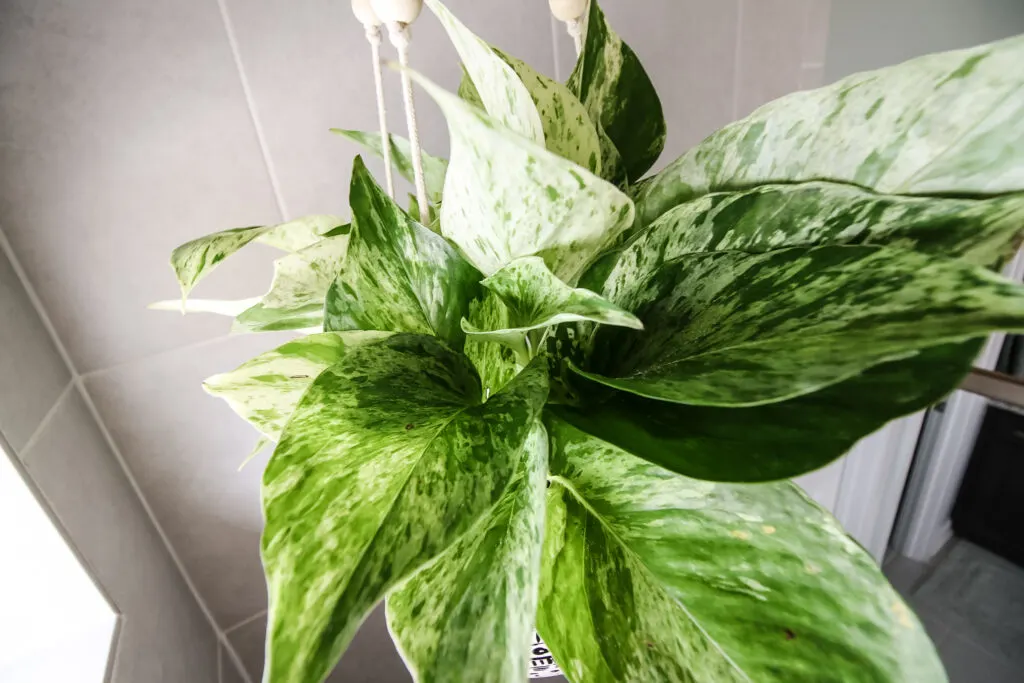
Maintaining Variegated Leaves
Now that you have spent the money and mental energy to get a variegated plant, we want to preserve that variegation.
Because yes, not only can variegated plants die, but many of them can lose their variegation and “revert” back to a solid color plant.

Preserving Variegation
Variegated plants, while stunning, often require a bit more attention and care than their all-green counterparts. One of the primary challenges in maintaining variegation is preventing the reversion of variegated leaves back to the standard, all-green form.
This reversion occurs due to genetic instability in variegated plants, where the green, non-variegated tissue can sometimes become dominant if not properly managed.
To tackle this issue, you must be vigilant and proactive.
Vigilant Pruning
Regularly inspect your variegated plant for any shoots or leaves that show signs of reverting to an all-green color.
These portions tend to have a stronger growth rate because they can produce more energy through photosynthesis.
Promptly prune these reverted sections to maintain the variegated appearance.
Selective Propagation
When propagating variegated plants through cuttings or division, ensure that you take cuttings from the variegated portions rather than the reverted green areas.
This will help preserve the unique variegation in the new plants.
Fertilize Wisely
Avoid over-fertilizing your variegated plants, as excess nutrients can encourage rapid growth in the green parts, potentially overpowering the variegated areas.
Opt for a balanced, slow-release fertilizer that won’t promote excessive green growth.
Adequate Light
Ensure that your variegated plants receive the appropriate amount of light. While they do need light to thrive, excessive sun exposure can stress the plant and lead to more green growth.
Finding the right balance of light is essential.
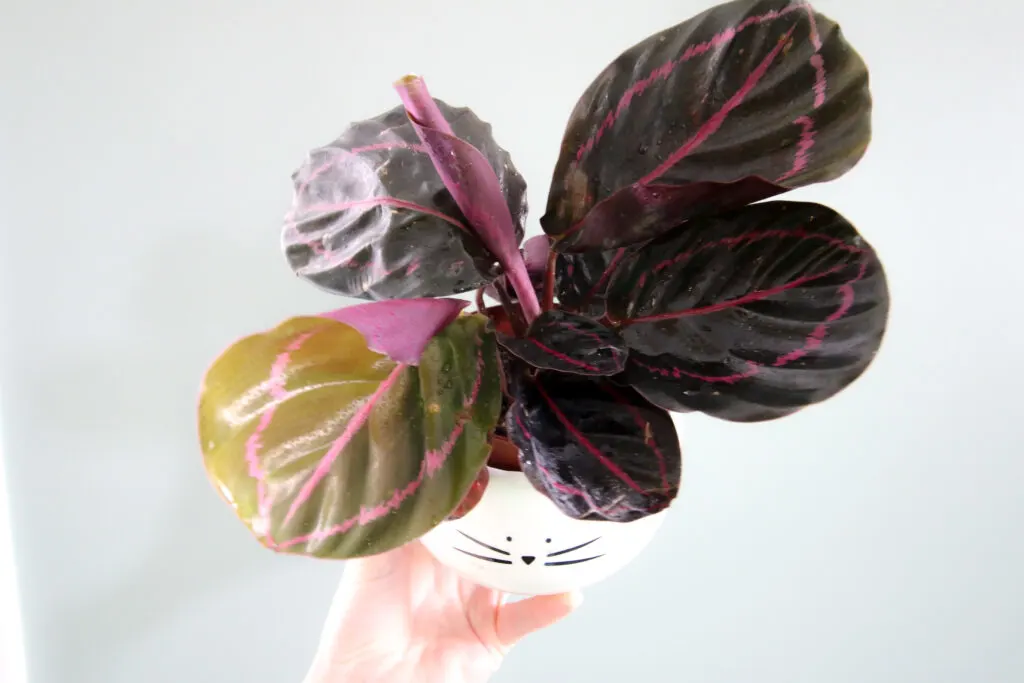
Encouraging and Enhancing Variegation
Encouraging and enhancing variegation in your plants can be a rewarding process, making them even more visually striking. Here are some methods to help you encourage variegation:
Appropriate Lighting
Variegated plants require adequate light to maintain their unique patterns. Provide bright, indirect sunlight to keep their colors vibrant.
Adjust the light intensity based on the specific needs of the plant; some variegated species prefer more light, while others thrive in lower light conditions. Observe your plant and adjust as needed!
Proper Nutrition
Variegated plants benefit from a balanced and appropriate fertilizer regimen. Use a fertilizer with a slightly higher ratio of phosphorus to encourage variegation.
Apply it during the growing season (spring and summer) but reduce or stop fertilizing during the dormant winter months.
Regular Pruning
Pruning not only helps maintain variegation but also encourages bushier growth. Pinch off growing tips and trim leggy stems to maintain a compact and vibrant appearance.
Always use clean, sharp pruning shears to avoid damaging the plant.
Optimal Humidity
Many variegated plants appreciate higher humidity levels. You can enhance humidity by misting the foliage, using a humidity tray, or placing a small humidifier near the plant.
This can help reduce stress and maintain variegation.
Avoid Stressors
Variegated plants are more sensitive to stress factors such as extreme temperatures, inadequate watering, or pest infestations.
Ensure your plant is in a stable environment with consistent care to prevent stress-induced reversion.
By addressing these challenges and implementing strategies to encourage and enhance variegation, you can enjoy the beauty and uniqueness of variegated plants in your home or garden for years to come.
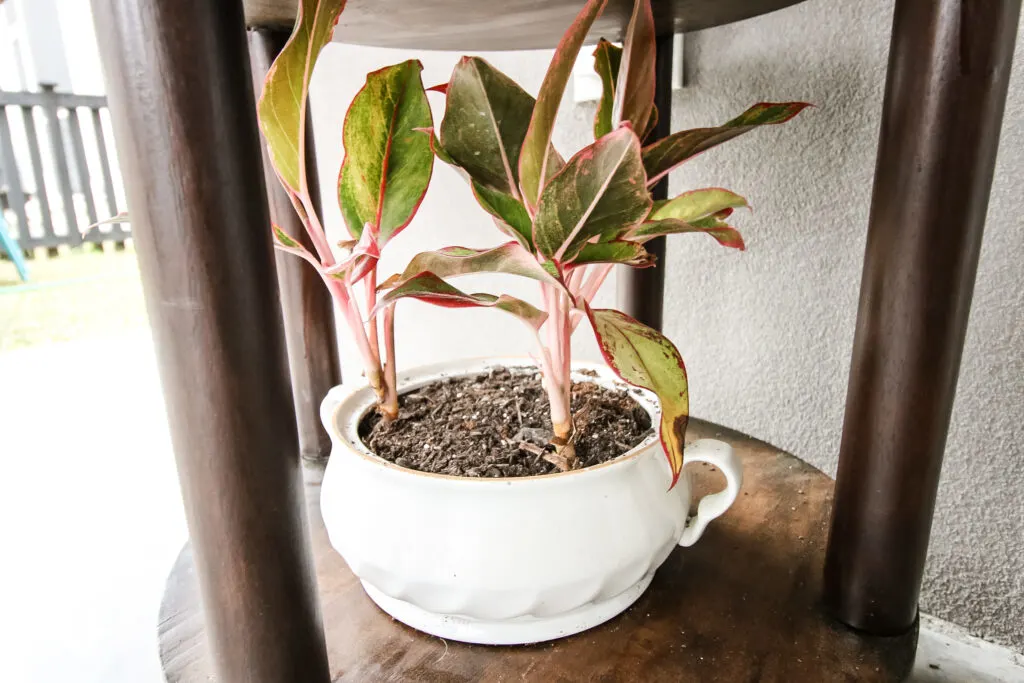
Proper watering techniques
In general, variegated plants seem to be more likely to get root rot than other plants.
So, it is super important to not over water your plants! Take these steps to avoid overwatering:
- Dill drainage holes in your pot
- Run a humidifier to increase plant humidity
- Choose well draining soil mix
- Consider bottom watering the plant
- Prune + deadhead any brown leaves as soon as possible
- Keep your plant in bright light to help keep the soil dry
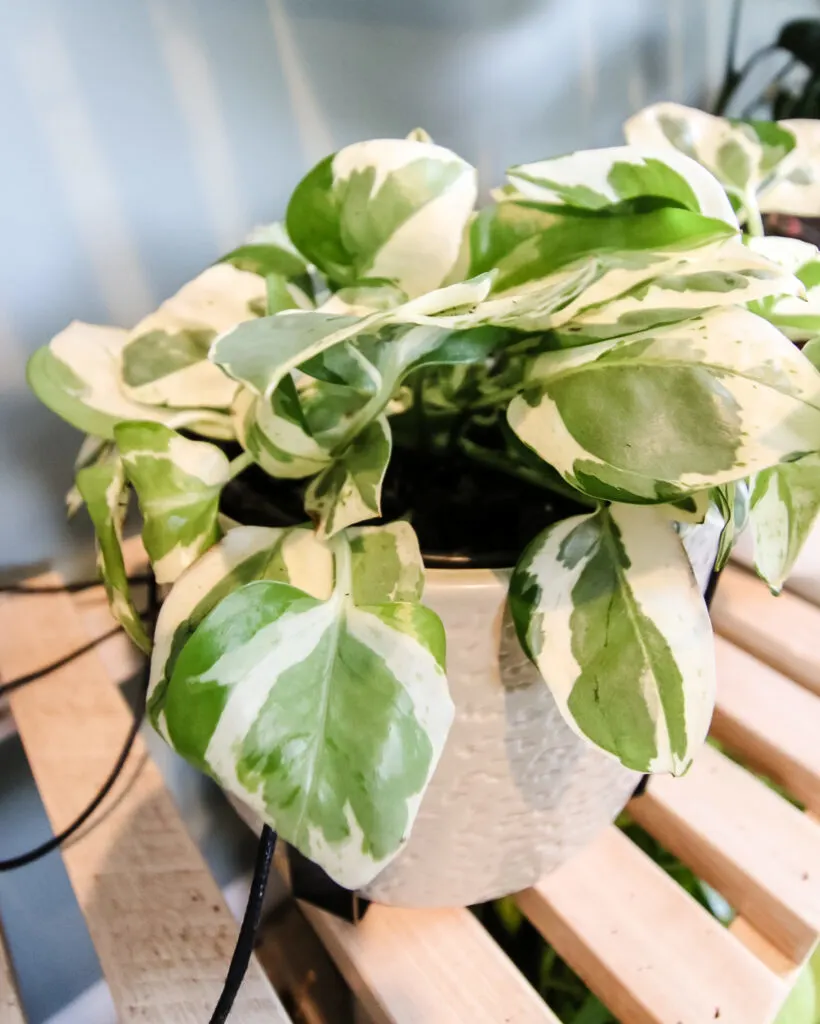
Light Requirements for Variegated Plants
Most variegated plants need more light than non-variegated plants, due to the colored portions of their leaves not doing photosynthesis.
However, those same colored portions can also be more sensitive to light and more likely to get scorched or burned.
These plants generally want very bright, but indirect sunlight. Do not put them out in direct sun or they will almost certainly get burned on the variegation.
This is a case when grow lights can be helpful – they provide tons of light without giving them a UV burn!
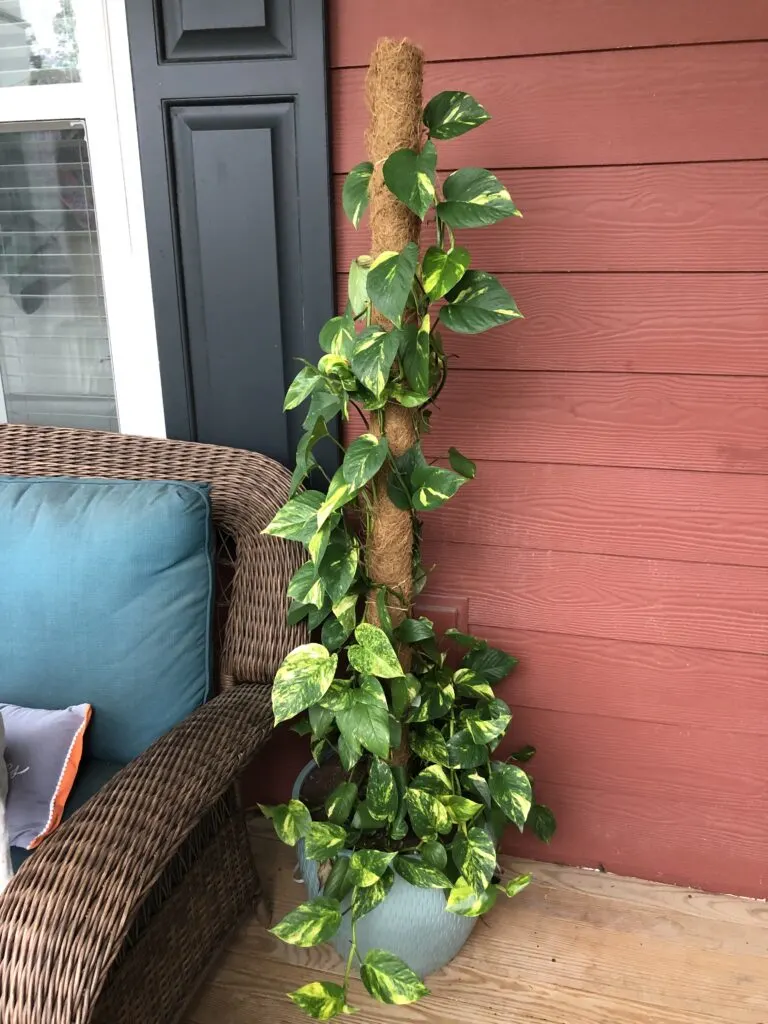
Are Variegated Plants Harder to Care For?
In general, variegated plants are going to require more hands-on care when compared to their non-variegated counterparts.
They are more likely to need tweaks to their lighting, temperature, fertilization, and watering schedules.
Variegated plants are also more likely to get upset about a change in their circumstances and react poorly very quickly. For this reason, my number one suggestion when caring for variegated plant is to check on it regularly and inspect it for any problems or issues.
If anything seems to be changing, I would react as quickly as possible to keep your plant, healthy and alive.
Despite their increased care needs, variegated plants are beautiful with their unique leaf patterns and a wonderful addition to any houseplant collection!
Any more questions about caring for plants with variegated leaves?
Thanks for reading!


Hey there, I’m Morgan, a houseplant enthusiast from sunny Charleston, South Carolina. Growing up surrounded by my mom’s lush orchids and African violets, I discovered the magic of bringing nature indoors. Thanks to the pandemic, I delved deeper into houseplants, discovering their power to uplift moods and transform spaces. I’m here to spill all my secrets, helping you pick the perfect houseplant – and make it happy. Let’s keep your plants alive, together! 😊
